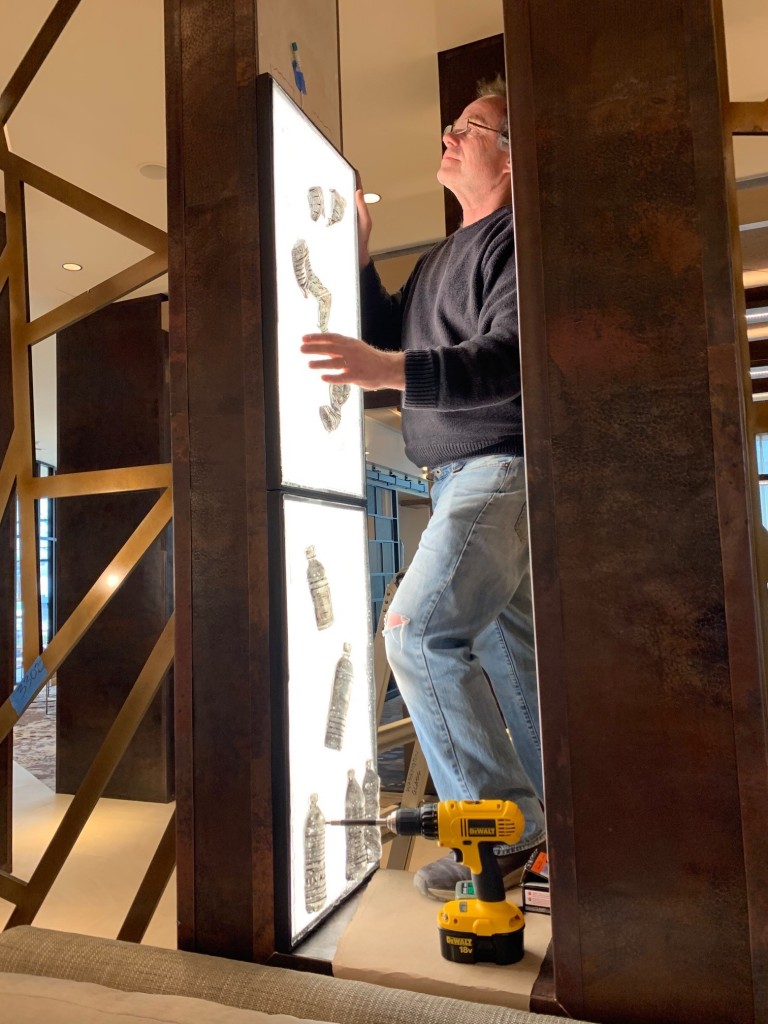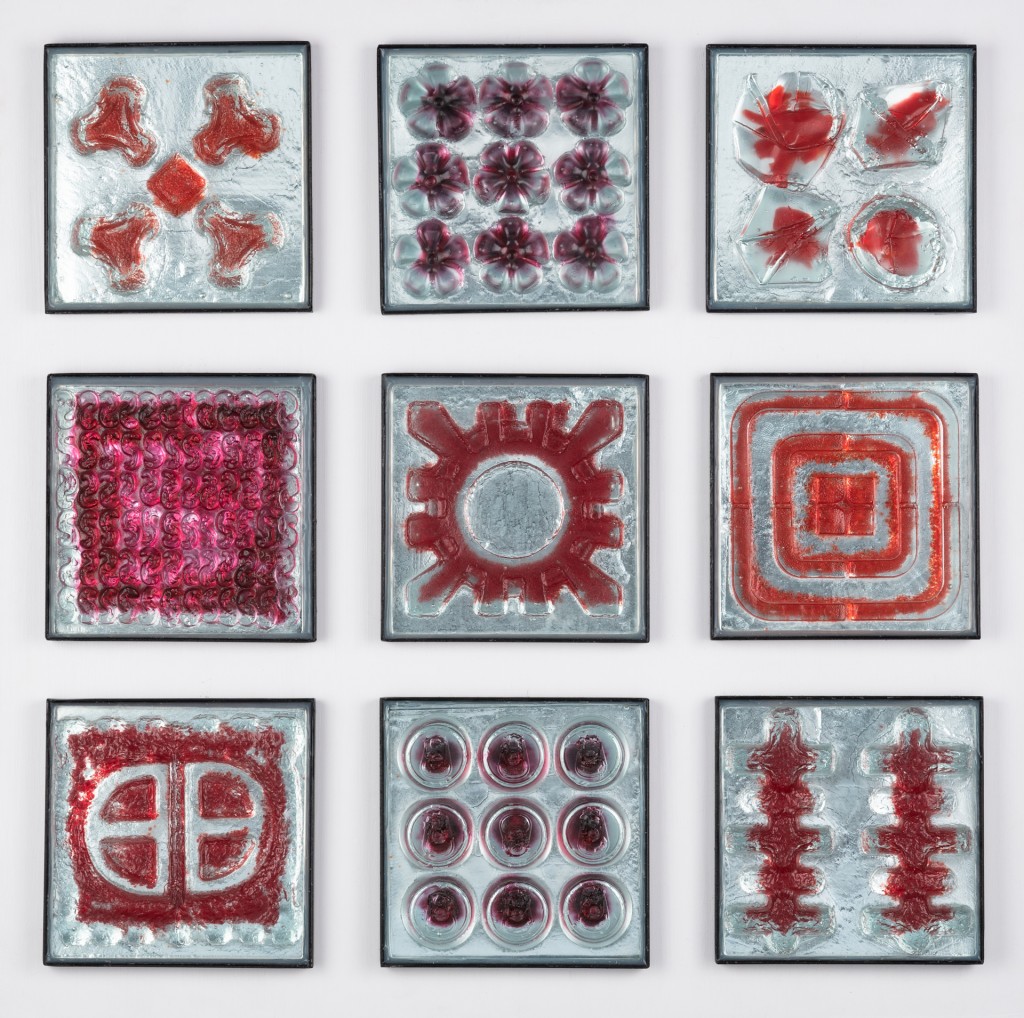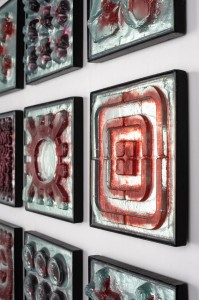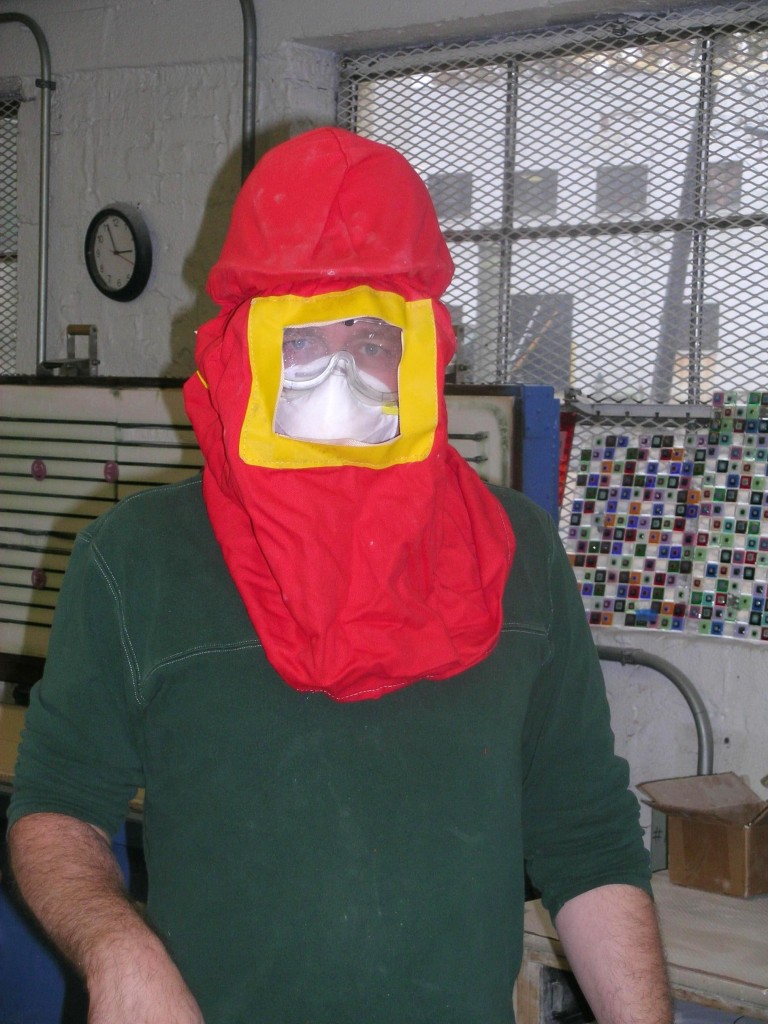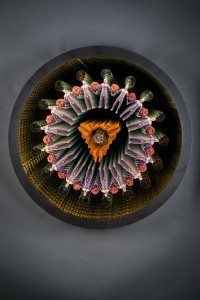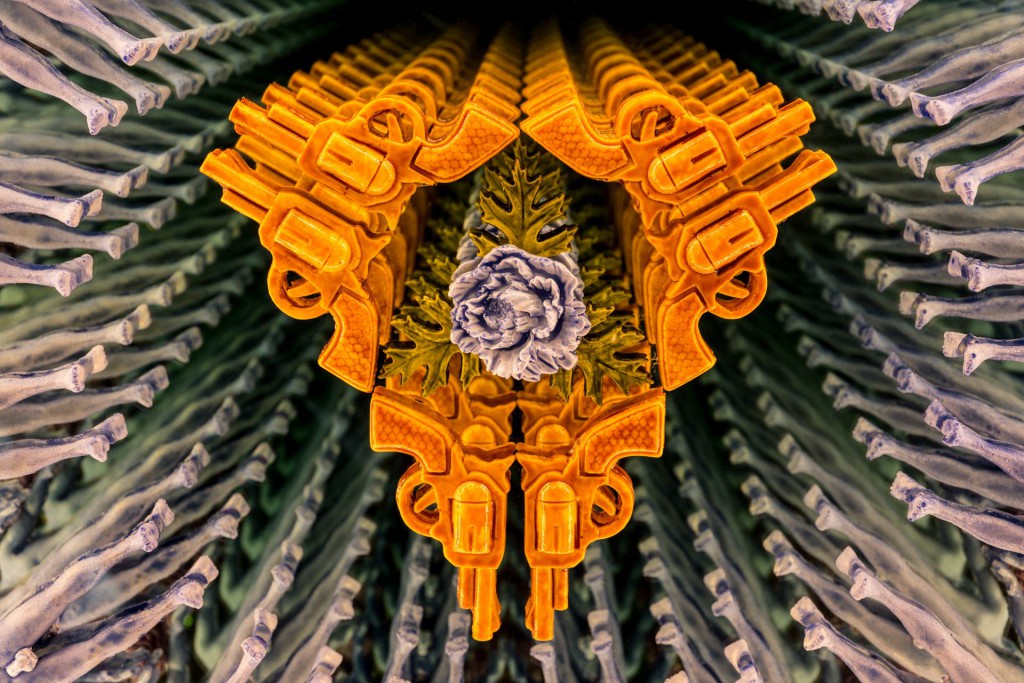Mark your virtual calendars! August 22 Open Studio Tours goes ONLINE! See what the artists in the Glass School have been doing over the past months! 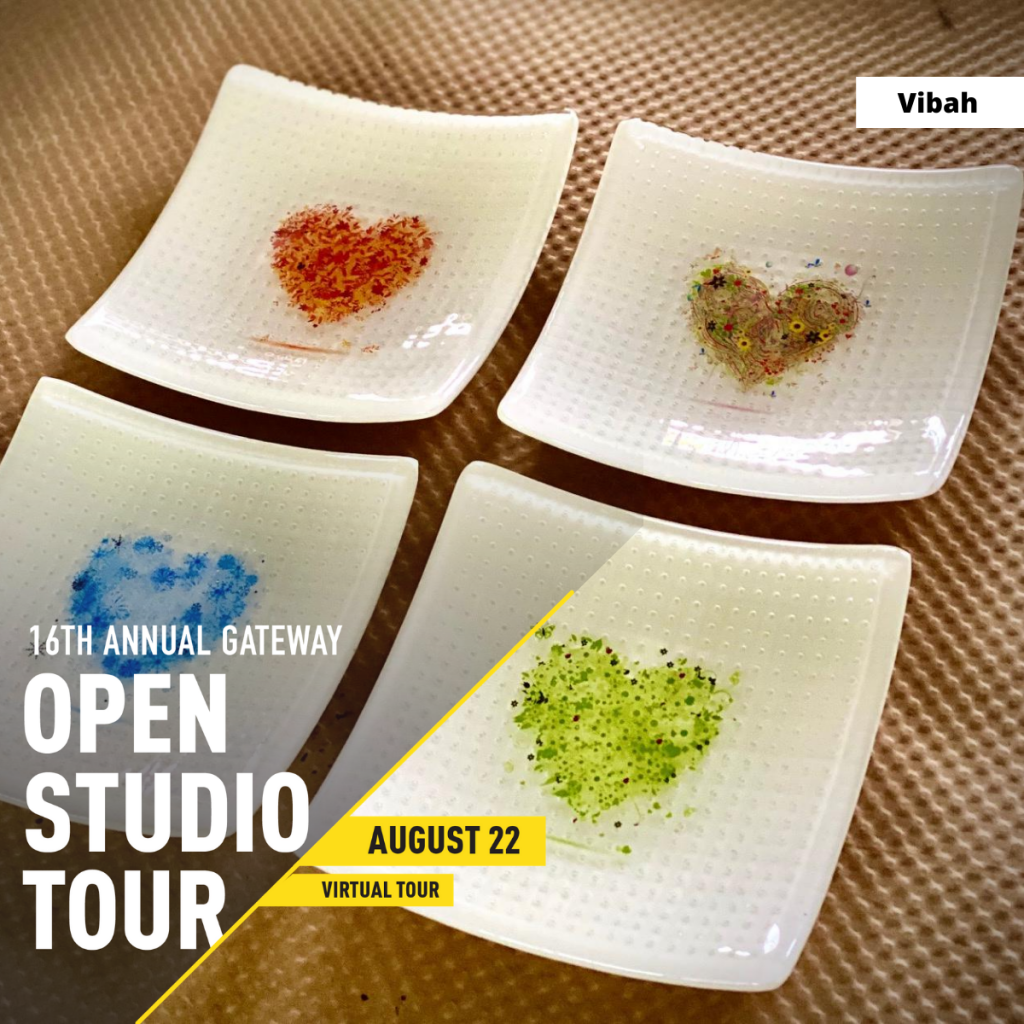
Category Archives: media based art
WGS Featured Artist: Erwin Timmers
CLICK IT! Featured Artist: Erwin Timmers
Erwin Timmers is the co-founder of the Washington Glass Studio and Washington Glass School. Originally from Amsterdam, he moved to California and graduated from Santa Monica College for Design Arts and Architecture. In 1999 he moved to the Washington DC area and since then his sculptural artwork has been on display in Zenith Gallery, Fraser Gallery, and Gallery Neptune. Erwin was named the Montgomery County, MD Executive’s Award Outstanding Artist of the Year in 2018.
His approach to art is multifaceted, incorporating metalwork, innovative lighting and glass design. He teaches glass, lighting, sculpture, and metal work. Industrial salvage and recycling are recurring themes in his work, which he sees as crucial parts to the interaction with one’s surroundings. Recently, the Artisan 4100 – an apartment community opening along Route 1 in Brentwood, MD – commissioned Erwin Timmers to create a major glass and light installation for the new building lobby.
Washington Glass School blog catches up with Erwin as his work is part of the WGS Contemporary online exhibit “CLICK-IT!”.
Washington Glass School (WGS): Describe your artwork method/process.
Erwin Timmers: I cast objects in recycled glass. For this series I have used discarded packaging material, from which I take molds in plaster. The glass then heats up in an electric kiln, melts and takes on the shape of this mold. To finish I chop, and trim the glass and weld the metal frame.
WGS: Describe your work in the show and highlight aspects that the viewers should understand about the work.
Erwin Timmers: The work features single-use plastic wrappings that viewers may recognize. The grid format formalizes the display of “trash” as art and then I use grids within each frame as well. I hope to give viewers a moment of pause while contemplating the shapes and patterns.
WGS: How have you handled the Covid lockdown?
Erwin Timmers: Initially COVID was like snow days we hadn’t had, but with great weather. That was before any financial pressure came into play. It was motivating to see the air pollution worldwide go down, I wish it could stay like that. But at the same time the single use plastic pollution is increasing, giving me even more art base materials…
WGS: What artwork/event has moved you and got you thinking about your own work?
Erwin Timmers: The current civil crisis has been deeply moving. It caused me to rethink and redevelop the direction of my hands symbol series.
WGS: if you were not an artist – what would you be?
Erwin Timmers: Epidemiologist
WGS: Do you do a lot of planning in your work – or is there an element of chance while working?
Erwin Timmers: I plan the general idea, but often new ideas and aspects emerge as I work. I try to incorporate these, and I can then evaluate whether they work or not.
WGS: What is your rule of thumb in determining when a work is finished?
Erwin Timmers: When I sign it, it is done…
Click here to jump to Erwin Timmers work in CLICK-IT!
Erwin’s work is part of the companion exhibit/fundraiser – “Artists for Racial Justice” Click HERE to jump to the show.
Witness Tim Tate’s Infinite Mirror Sculpture
Artist Tim Tate has been pulling traditional craft into new realms and depths. Tim shared his newest series “Witnesses of Wonders” and the work is incredible. In this series,Tim has been using elements that were 3-D printed at Catholic University’s modeling department combined with infinity mirrors to expand the sensation of unlimited space in the artwork.
From Tim’s artist statement about his series:
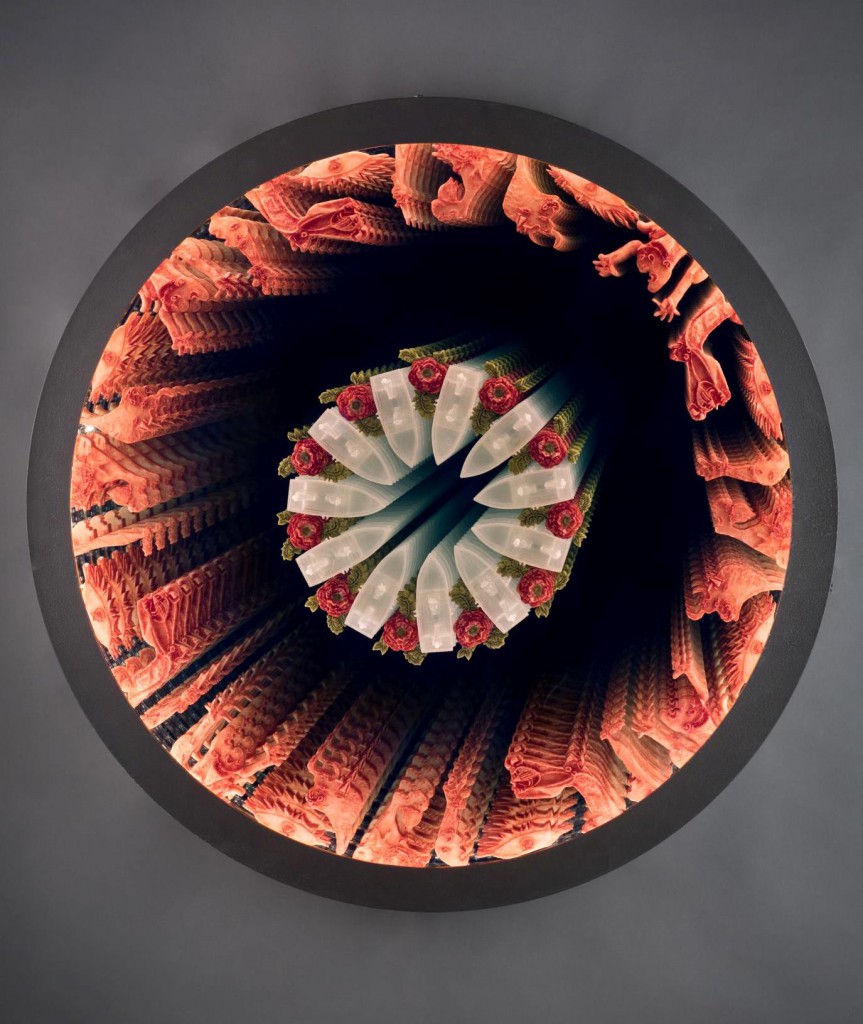
Tim Tate, “21st Century Guernica”; Glass, Cast Images, LED; 36″ x 36 x 4″. In this piece a ring of translucent refugee boats float in the center, all with no where to turn to. The center ring is shared with red poppies, the symbol for war remembrance in England. The outer edge is made up of individual images from the powerful Picasso painting entitled Guernica.
“I try to entice the viewer to look deeply into and completely experience my windows into alternative dimensions. My works create an optical and bodily illusion of infinity through apparently limitless space. There is an intimacy created by viewing deeply into a circular opening, as if peering through a portal to witness another endlessly repeating reality.
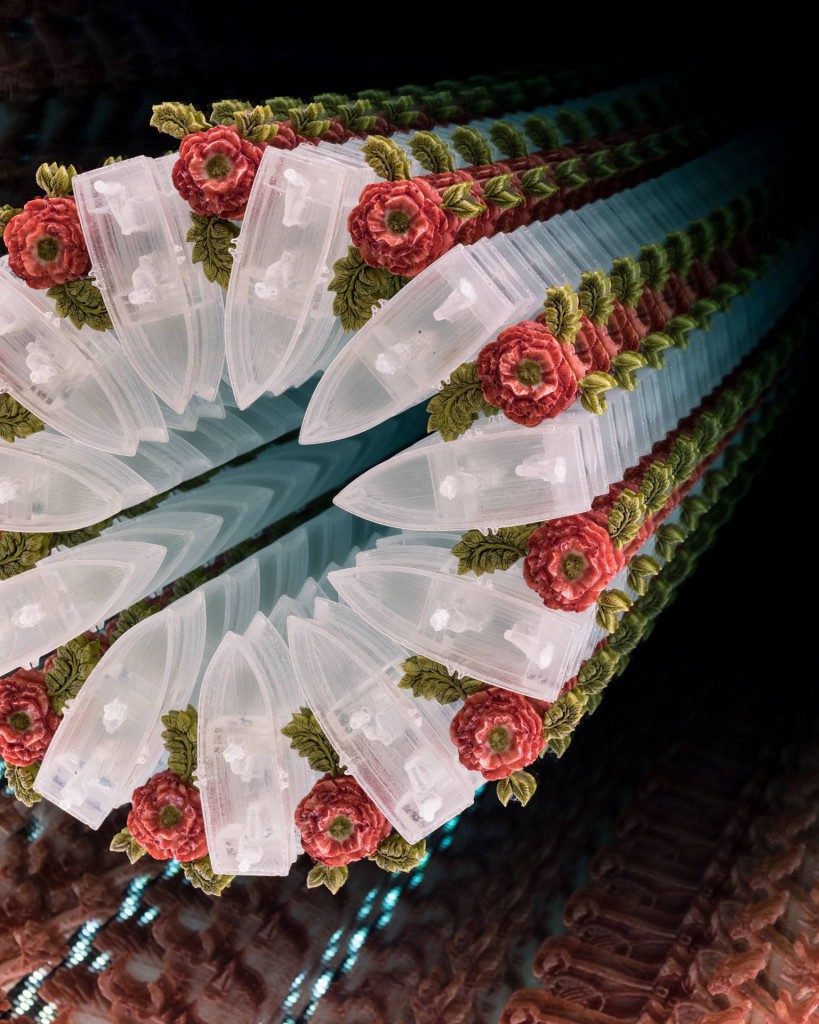
Tim Tate, 21st Century Guernica – detail . Said Tim about the imagery of the refugee boats, ” Refugees right now are trying to escape unspeakable atrocities and protect their families who are turned away at country after country. This is the shame of our decade. “
The constant repetition of imagery also speaks to us of timelines: ones that go endlessly into the future or extend endlessly into the past. These repetitions reference society mired into static social patterns, some good, some bad.
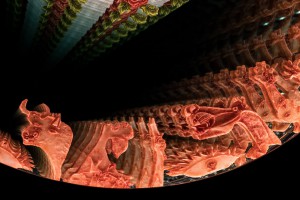
Tim Tate. “21st Century Guernica” detail. “Picasso made his painting in mostly tones of black white and gray “to drain the life out of them”. I drenched them in red and returned color to them because this horror is happening right now in this world….in fact this very second.” said Tim Tate.
We look inside these portals as if seeing into a dream, fully realizing that this is but an illusion. But even though we know it is a illusion that should not stop us from freely examining it, and hopefully seeing another world at the same time.
Uncomfortable with any single defining time, I prefer sliding through the centuries; from 19th century Victorian techno-fetishism, to mid and late 20th century references to endless mirrors and studio glass to 21st century electronics and political focus. Perhaps all my work can be defined by how uncomfortable I am with definitions.” Tim Tate.
For more images of Tim Tate’s newest works – click HERE to have a look at his website
US/UK Collaborative Art Precedents : Glass 3 and Artomatic
As the arrangements for the UK artists are being finalized, the Washington Glass School blog takes a look back to the first two collaborative exhibitions and their outcome.
GLASS 3__________________________
In 2008, Artomatic organized an exhibit that showcased glass art, focusing on how three “glass” cities approach the medium. The collaborative show was titled “Glass 3” referencing the invited glass centers of Washington, DC, Toledo, Ohio and Sunderland, England.
- Sunderland is home to the UK’s National Glass Centre at the University of Sunderland. The North East of England has a long tradition of glassmaking – since the 7th century as glassmakers from France were brought in to make the stained glass windows. The numerous glass factories of the 17th and 18th century have now closed, and in its place a number of studio glass artists working in smaller studios.
- Toledo, Ohio is known as “Glass City” – where in 1962, Harvey Littleton and Dominick Labino presented the seminal glass workshop with the Toledo Museum of Art. This workshop profoundly influenced the American Studio Glass Movement.
- Washington, DC glass artists work at using glass as an expressive component in a larger whole, mastering technique in order to express content. The “post-craft” artists strive to make works that transcend words and discrete disciplines – therein lies their beauty.
 |
| Design of the Glass 3 exhibit graphics and catalog by Jon Gann. |
Artomatic had secured an exhibition space in the Georgetown Mall, and in February, artwork and artists from the UK and Ohio came into DC setting up the multi-level space.
 |
| 2008 “Glass 3” Exhibit. Photo by Tracy Lee. |
 |
| 2008 “Glass 3” Exhibit. Photo by Tracy Lee. |
 |
||||
| Artist Vanessa Cutler (R) talks about the UK artwork with Sunderland City Council’s Anne Tye (C) and DCist’s Heather Goss (L) on opening night. |
DCist city blog writer Heather Goss wrote of the 2008 collaborative show “Glass 3”:
“But does all of this lovey-dovey, hands-around-the-world stuff translate into a good art show? In this case, definitely. Glass work has always faced a tough challenge being accepted as “fine art” and not “a bunch of bowls and vases you find at the craft fair.” And if anyone can make you change your mind, its the artists from Sunderland. Some of the artists are actually experts in glass theory with Ph.Ds and have developed techniques that not only create beautiful art, but have revolutionized architecture and other uses for the medium.”
Click HERE to jump to full DCist article.
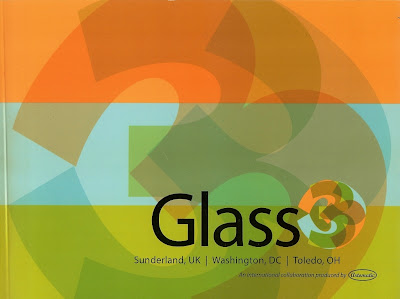 |
| A catalog of the works in the show was published, a copy is in the Corning Museum of Glass’ Rakow Library. |
Click HERE to jump to the Glass 3 catalog pdf.
The Brits returned charged up with the success of the interaction with the Americans, and based on the Washington Glass School model, created a not-for-profit artist run studio facility in Sunderland; Creative Cohesion. The new organization is home to professional artists working in glass, ceramics, fine art and mixed media, with a gallery, arts workshops and a glass hot-shop.
 |
| UK’s Stephen Reveley’s fused glass forms at 2009 Artomatic. |
Artomatic 2009__________________________
In 2009, Artomatic held the 10th anniversary of its unjuried art fair in DC’s Southeast, near the Navy Yard. 38 artists from the UK were able to participate in the event via Creative Cohesion joining with Artomatic in the planning of the exchange. A number of the visiting artists were part of the University of Sunderland and the UK’s National Glass Centre and held workshops where they demonstrated their techniques.
 |
| UK glass casting workshop by Stephen Beardsell held at Washington Glass School, May 2009. |
 |
| Sarah Blood’s neon artwork at Artomatic. |
The Artomatic was a great success, and the visiting artists were able to connect to the US artscene. Glass artist Phil Vickery’s artwork was selected by the James Renwick Alliance to receive their Craft Award of Distinction.
 |
| Award winning glass by Phil Vickery. |
 |
| 2009 UK / US Artomatic artist reception |
The connection between the sister city artists had been strengthened, andProfessor Peter Fidler, Vice Chancellor and Chief Executive of the University of Sunderland was impressed with the artists at Washington Glass School, and sought out ways to continue the interaction.
Later, after Tim Tate and Michael Janis were successful Fulbright Scholar candidates, the connection to the University of Sunderland continued; in 2012, they both were Fulbright Scholars at the University and held workshops at Creative Cohesion.
The Brits are back this year, and the exhibit has broadened to include ceramic artwork.To complement the artwork, International Glass and Clay 2013 will host panels at Pepco Edison Place Gallery all month long meant to inspire in depth conversation about cultural diplomacy, Fulbright exchanges and international artists residencies and the arts. The events will include representatives from cultural institutions in the nation’s capital, including embassies, government entities, think tanks and local arts organizations.
“This year, the DC Commission on the Arts and Humanities launched a program encouraging District artists and arts organizations to develop cultural partnerships with our sister cities, which we are proud to implement,” said Lionell Thomas, Executive Director of the DC Commission on the Arts and Humanities. “International Glass and Clay 2013 is an excellent example of how cities with differing cultures can approach diplomacy through their respective creative heritage.”
International Glass and Clay2013 will open from Friday, March 1 to Friday, March 22. It is free for the public to attend. At Pepco Edison Place Gallery, 702 Eighth Street (between G and H Street). Gallery hours are 12 to 4 p.m. on Saturdays and Tuesdays, and 12 to 8 p.m. on Wednesdays, Thursdays and Fridays. The gallery is closed on Sundays and Mondays. The Gallery Place Metro station servicing the green, red and yellow lines is within close walking distance to the gallery.
